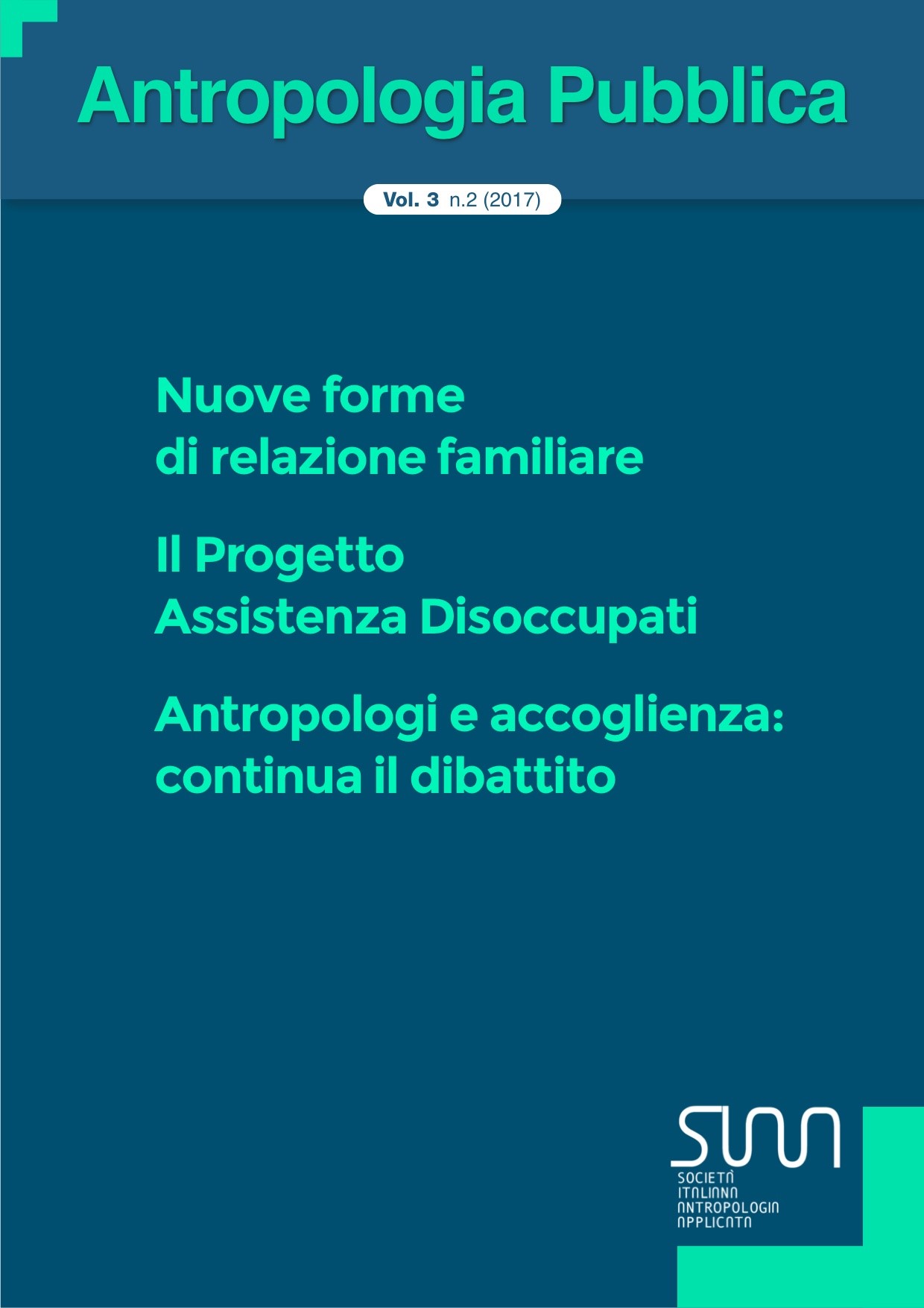Immaginandosi insieme. Il ruolo della fotografia nell’adozione internazionale
DOI:
https://doi.org/10.1473/anpub.v3i2.115Abstract
This paper aims at reflecting on the practices of co-construction of kinship within intercountry adoption families. Factitious elements of making family will be analysed, together with the mechanisms of social construction that underpin it, thus offering a peculiar gaze of ideologies and narratives that rule the regulation and reproduction of family models. Creativity and performativity of kinship shed light on individual expectations, which have to be adapted and translated into a collective and shared language that could support the beginning of an intimate relationship within the household. For what concerns kinship creation and co-construction through intercountry adoption, the photographic tool plays a significant role in transforming the intimate experience of biological strangers living together through the production of shared memories. The images that families selected and recounted within their households offer a support to rethink and negotiate daily life through the production of pictures that allow family members to look, talk and think about themselves as a family since the beginning. The creative and interpretative power of the subjects reveals its essential role in shaping experiences and finding a space of expression through the construction of resistance and continuities. In shooting and displaying family pictures, processes of kinship construction are evoked in all their unicity and fragility, revealing mediation and understandings that underline the intimate knowledge of subjects, often strangers for each other in terms of socio-cultural and experiential past.



